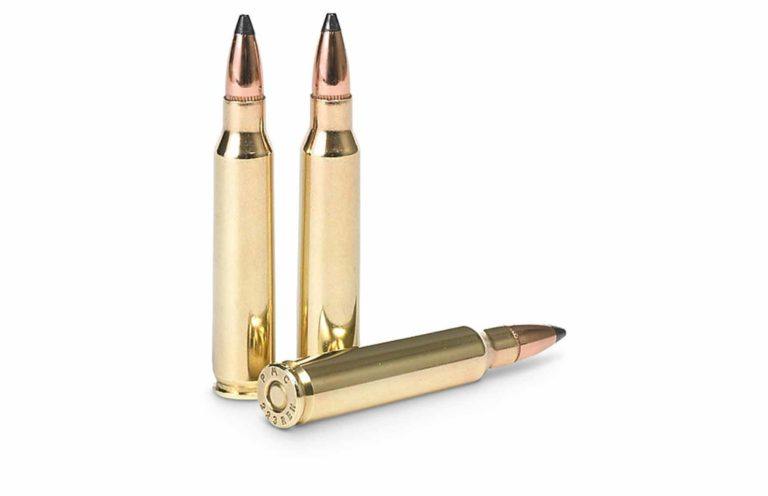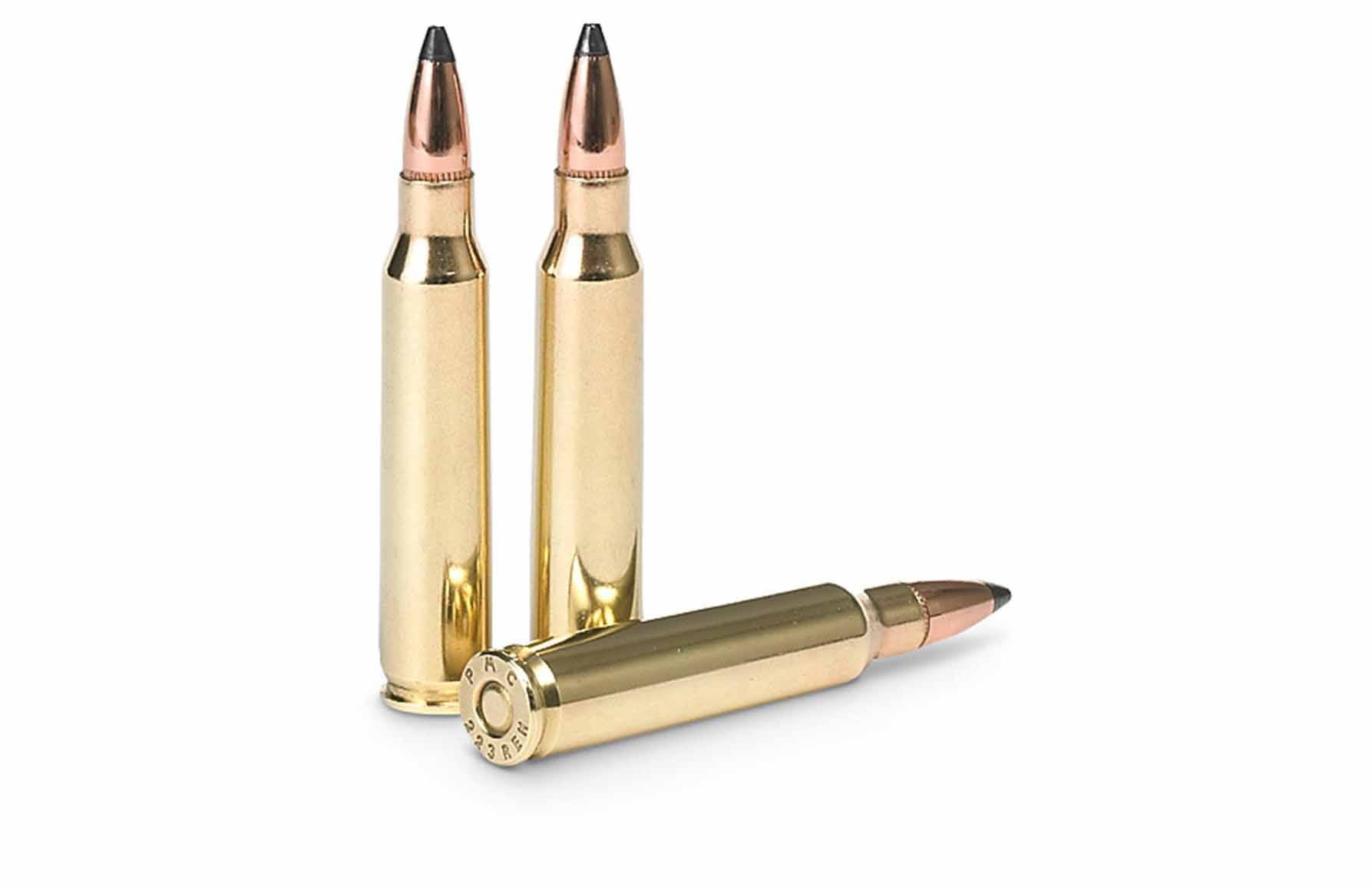

Walking hand-in-hand with the development of the AR-15, the .223 Remington has gone on to become among the most popular centerfire rifle cartridges of all time.
How Did The .223 Remington Come About:
- First appeared in 1957 as an experimental military cartridge for the Armalite AR-15.
- The cartridge is nearly identical to the .222 Remington Magnum, the only difference being that the .223 has a slightly shorter case.
- Dimensionally, these the .223 Rem and 5.56x45mm NATO are identical, however, the latter is generally loaded to a higher pressure.
Historical Notes The .223 Remington first appeared in 1957 as an experimental military cartridge for the Armalite AR-15. In 1964, it was officially adopted by the U.S. Army as the 5.56mm ball cartridge M193. It’s used in the selective-fire M16 rifle, which is based on the original AR-15 design.
One of the requirements for the cartridge was that the projectile have a retained velocity in excess of the speed of sound (about 1,100 fps at sea level) at 500 yards — something that could not be achieved with the .222 Remington. Gene Stoner of Armalite, among others, designed a case slightly longer than the .222 and had Sierra make a 55-grain boattail bullet. This combination met the design requirements.
Originally an alternative military cartridge, the .223 (5.56x45mm) is now the official U.S. and NATO military round. We should note here that NATO forces, including the United States, have standardized a new 5.56X45mm round with a heavy bullet, and the M193 is no longer standard.
Shortly after the military adopted this cartridge, Remington brought out the sporting version. Practically every manufacturer of bolt-action rifles has at least one model chambered for the .223. In addition, there are many semi-auto rifles available in this cartridge. At one time, even the Remington Model 760 pump-action was available in .223.
On-Target Ammunition Information:
- The Blistering Hot 30 Nosler
- The .280 Ackley Improved
- If You Had To Pick Just One Cartridge, What Would It Be?
- Loading the .308 Winchester
The .223 Remington is nearly identical to the .222 Remington Magnum, the only difference being that the .223 has a slightly shorter case. The two are not interchangeable, although the .223 will chamber in a .222 Magnum rifle. The result, however, creates a gross headspace condition, and the .223 case can rupture if fired in the .222 Magnum chamber.
There has been a great deal of confusion regarding the interchangeability of the .223 Remington cartridge and 5.56x45mm NATO ammunition. Dimensionally, these two cartridge cases are identical.
However, 5.56 NATO ammo is generally loaded to a higher pressure than commercial .223 Remington ammunition. In 1979, SAAMI cautioned shooters that 5.56x45mm military chambers and throats differ from .223 Remington sporting rifle chambers. So, military ball ammo might produce high chamber pressures in sporting rifles.
The difference between these two cartridges is pressure, and the difference in the rifles is the way the leade (the section of the chamber in front of the cartridge case) is cut into the barrel; 5.56 NATO chambers have a longer leade. Maybe the simplest way to explain the difference is to say that the 5.56 NATO round is a +P version of the .223 Remington. Exercise the necessary caution and sort your ammunition accordingly.

Editor's Note: This article is an excerpt from Cartridges of the World, 16th Edition.

Next Step: Get your FREE Printable Target Pack
Enhance your shooting precision with our 62 MOA Targets, perfect for rifles and handguns. Crafted in collaboration with Storm Tactical for accuracy and versatility.
Subscribe to the Gun Digest email newsletter and get your downloadable target pack sent straight to your inbox. Stay updated with the latest firearms info in the industry.

![Best Concealed Carry Guns In 2025 [Field Tested] Wilson Combat EDC X9S 1](https://gundigest.com/wp-content/uploads/Wilson-Combat-EDC-X9S-1-324x160.jpg)


![Best 9mm Carbine: Affordable PCCs [Tested] Ruger Carbine Shooting](https://gundigest.com/wp-content/uploads/Ruger-Carbine-Shooting-100x70.jpg)
![Best AR-15: Top Options Available Today [Field Tested] Harrington and Richardson PSA XM177E2 feature](https://gundigest.com/wp-content/uploads/Harrington-and-Richardson-PSA-XM177E2-feature-100x70.jpg)
